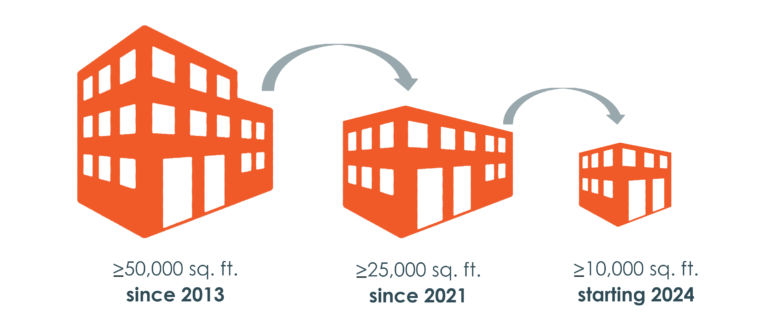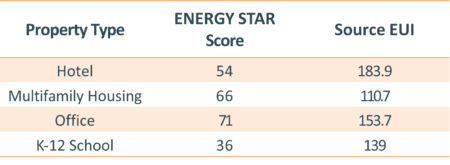


Buildings below the BEPS median will need to improve energy performance or face financial penalties. We are here to help you prepare.

The Building Energy Performance Standards (BEPS) are a minimum threshold of energy performance by property type created to drive energy use reduction in existing buildings.
The program was created to help meet the energy and climate goals of the Sustainable DC plan—to reduce greenhouse gas emissions and energy consumption by 50% by 2032.
The BEPS program is an extension of DC’s benchmarking requirements. Building owners are required to track the energy and water usage for their building(s) using the US EPA’s ENERGY STAR® Portfolio Manager and report that data to DOEE on an annual basis. Over time, the benchmarking requirement will expand to smaller buildings, and eventually, require all private and city-owned buildings 10,000 sq. ft. and over to benchmark.
Whether or not you meet DC’s BEPS depends on your building’s median energy score as determined by your benchmarked energy usage. If your building does not score above the median performance, it has six years to demonstrate improvement or face financial penalties. The target for improvement is based on your property type. The Building Energy Performance Standards Compliance Guidebook contains details about the pathways, reporting, and more.
Timeline of DC’s Benchmarking Requirement

The Standards for the First Compliance Cycle

01.
Data accuracy is a critical first step. Check that square footages, space use types, occupancy, and all meters are entered. A good place to start is Portfolio Manager’s Data Quality Checker. If updates need to be made to your Portfolio Manager entry, we can work with you to ensure you have the documentation you need.
02.
Review the BEPS compliance pathways and determine which are viable. Factors to consider in choosing the best pathway include distance to the BEPS median ENERGY STAR score, building and equipment age, current or upcoming renovations, planned equipment upgrades, and access to capital.
03.
Make a plan for aligning building upgrades with future performance targets and start to think about how to fully electrify building systems. We expect BEPS to get more stringent over time. Buildings that meet the BEPS for the current period should still consider taking these steps to ensure buildings stay above the medians.
SWA staff have worked as advisors on several new and existing building initiatives for the District. This ongoing involvement offers our clients an unparalleled knowledge of DC’s requirements.
As 50-year veterans of the industry, SWA has provided energy advisory services including benchmarking, energy audits, and commissioning to over 200 million square feet of existing buildings.
Whether you are a large portfolio owner, property manager, private school, or boutique hotel, we can help you prioritize necessary building upgrades and plan ahead to ensure you comply with BEPS.

Knowledge Hub